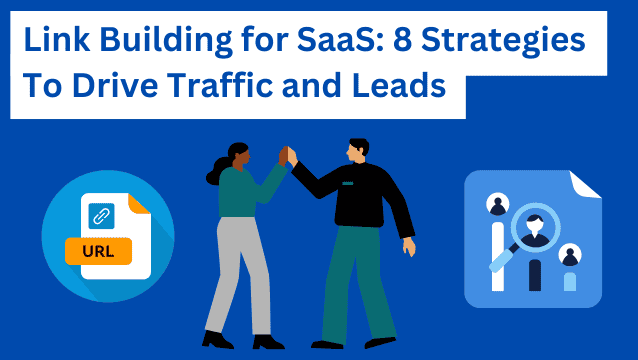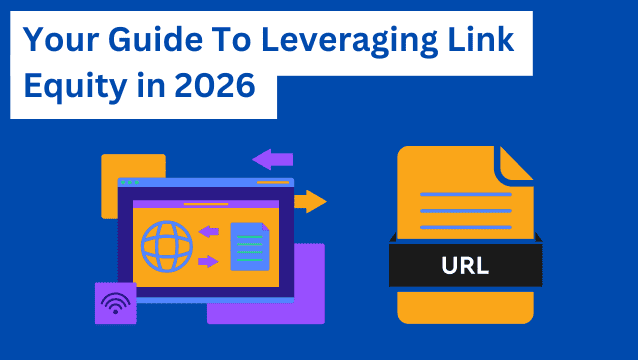Contextual link building is a powerful strategy for improving your website’s SEO and driving organic traffic. By naturally placing high-quality links within your content, you signal to search engines that your pages are valuable and relevant.
This not only boosts your search rankings but also enhances user experience. It helps guide readers to more in-depth information. When done right, contextual link building can set your site apart in a crowded online world.
Pages ranking at the top of search results often have more quality backlinks than those further down the page. Investing in smart, natural link building strategies can lead to higher conversion rates, more revenue, and a stronger market presence.
In this article, you will learn:
- Why contextual backlinks are the most powerful for SEO growth
- Seven real examples of contextual link building in action
- How to copy each example to get contextual links for your site
- How to get high-quality backlinks
Let’s quickly cover contextual links and why they are so powerful for SEO growth.
Why contextual links are so powerful for SEO
A contextual link is a backlink you get from other pages whose content is relevant to your content.
A contextual link:
- Is a natural part of the content that relates to it
- Links to a page with relevant content
- Adds value to the readers
- Increases a page’s keyword rankings
Contextual links enhance user experience by indicating what users can expect upon clicking.
Building these links can boost your site’s credibility with search engines, ultimately improving your rankings.
Main types of contextual links
We can categorize contextual links based on their location:
- External links: An external link points content from your website to a page on another website.
- Internal links: An internal link points from one of your pages to another on your website.
- Inbound links: These are external links from other websites pointing to a page on your website.
What do contextual links mean for your bottom line?
When a site ranks high, search engines like Google give it a high score, which makes it trustworthy and valuable.
Now, think of contextual links like word-of-mouth recommendations for your website. When a trusted site links to you, it’s like getting a high-five from a respected friend.
A Backlinko study shows a direct relationship between backlinks, page authority, and rankings. Many sites are missing out right now because they have too few contextual links. The study found that the top search result has about 3.8x more backlinks than results in positions two and three.
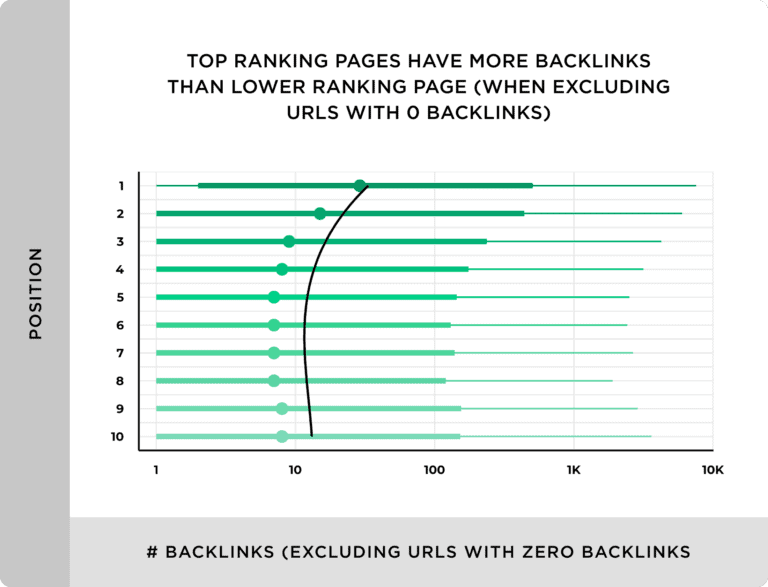
Without enough high-quality contextual links, businesses often struggle to climb search engine rankings and stay hidden in a crowded online world. Fewer backlinks mean fewer visitors, lower conversion rates, and a weaker market position with lower sales.
However, brands that actively earn these links often experience the following:
- Higher conversion rates: More visitors turn into paying customers.
- Increased revenue: Better search rankings and more traffic usually lead to higher sales.
- Stronger market position: Higher trust and authority make you more competitive, even against larger companies.
Let’s now look at real-life examples of contextual link building.
Example 1: Create high-quality content
Guest post links are a great way to show your expertise. You write helpful articles for other sites, and they include a natural link back to you. This helps boost your authority and trust.
That’s what makes them one of the most common ways of link building. It’s a win-win for both parties: they gain free content, and you can control the content that links to your site.
Our team at uSERP used guest post links as part of their strategy while working with Henry Meds. After just three months, one of their pages received 524 new monthly visitors. Henry Meds earned over 219 backlinks in just eight months, and its domain rating (DR) went from 8 to 53.
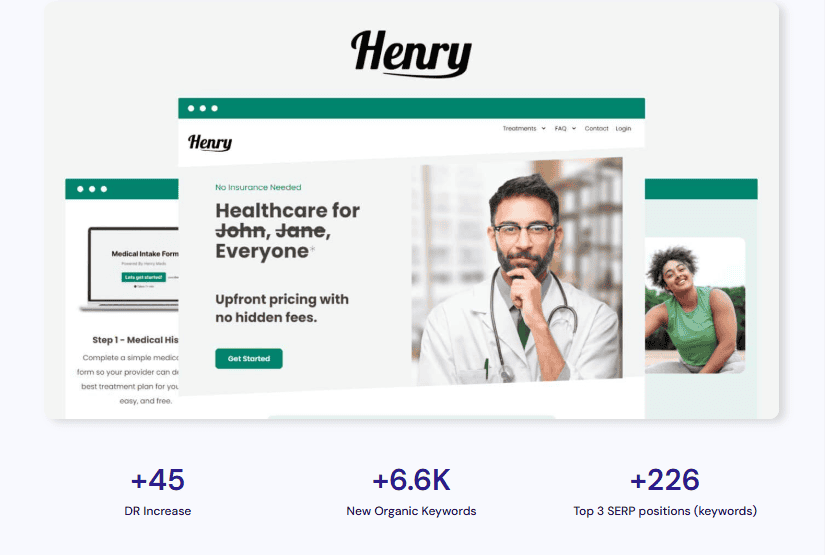
How you can do it:
- Research: Find target websites with an active blog and a high DR. These should be brands that share your audience. You can use tools like Ahrefs to find those already linking to your competitors.
- Propose: Find keywords that these websites can benefit from ranking. Contact them, proposing a guest post. Focus on what benefits them, not you.
- Write helpful content: Create the guest post. Make sure it answers your audience’s questions.
- Embed natural links: Place your link in the body of the post where it fits the topic.
Example 2: Increase brand awareness
When you have high-quality content on your site, it makes it easier for others to link to you. They recognize your authority in the niche and use editorial links.
These links come when others mention you without even asking them. Getting these links can be hard if your site is new, but it gets easier as you rank higher.
Editorial links are a constant winning cycle. They increase your brand awareness, which leads to others linking to you as well.
Another easy method to boost your domain awareness is the skyscraper technique. This is when you revise your existing content to make it better than your competitors. This increases your ranking and positions you above your competition. As a result, others (like review sites, for example) will want to link to you as you rank higher.
We used these two strategies to increase Monday.com’s organic traffic by 77.84%. We examined their competitors and found valuable key phrases that Monday could leverage. Then, we optimized their content around those keywords and created hundreds of new pieces of content. This earned Monday hundreds of new backlinks and got them noticed by some of the top press sites.
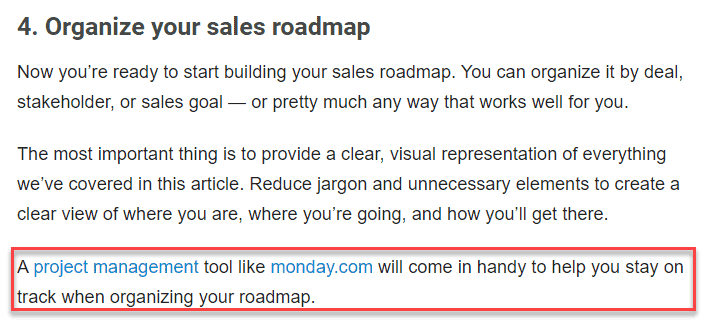
How you can do it:
- Revise: Run a scan with a tool like Ahrefs to see which of your pages have a low ranking.
- Analyze: Check which pages you can update and make better than your competitors. Update them.
- Share: Share the updated pages (or guides) on your social media and similar niche groups.
Example 3: Rank for top positions
Internal links are another common type of contextual link. They help spread link value across your site. Optimized anchor text gives your readers more information and keeps them on your site.
Search engines notice your visitors’ behavior. When readers click on internal links, search engines learn more about your page relevance and rank you higher for those topics.
This is one of the techniques we used with Hightouch. Before working with them, they had a solid DR but still found it challenging to rank for top keywords. To solve this, we combined gaining high-quality external links with anchor links. We ensured these backlinks used primary and secondary keywords in the anchor text.
As a result, they rank for 13,215 new keywords. A total of 278 keywords rose to the top three search results.
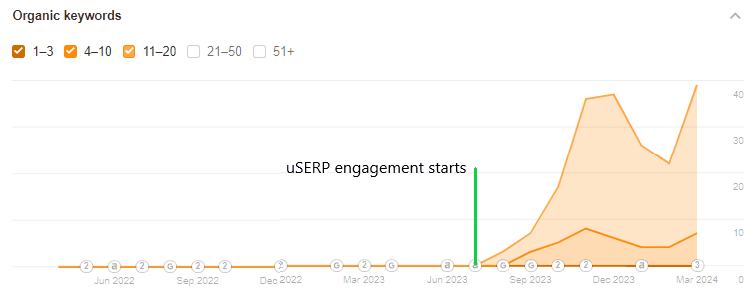
This is why this combination can be compelling. When you do this right, you can also rank for long-tail keywords before your competitors.
How it works:
- Optimized anchors: Use simple, clear anchor text that tells readers what to expect. Keep the anchor links concise.
- Internal linking: Connect related pages on your site.
Example 4: Differentiate from the competition
Publishing original research means sharing unique data or insights.
One of the best ways to do this is to conduct experiments in your niche. You can also use the data you collect while working with your clients. Use these to build a guide or study you can publish on your site.
Other sites reference your study as a trusted source when you do this. This not only builds your authority but also drives more links and traffic.
However, this approach can be expensive, depending on what you do. The good news is that your competitors can’t copy you because it’s your study.
This is the primary approach we at uSERP used while working with StuDocu. This platform is a student knowledge exchange, making it ideal for using research links.
First, we identified the largest gaps in ranking and backlinks. Then, we leveraged data and studies StuDocu had already done to acquire hundreds of backlinks from authority sites.
This approach resulted in a 2.5x increase in StuDocu search traffic and an over 500% increase in organic traffic.
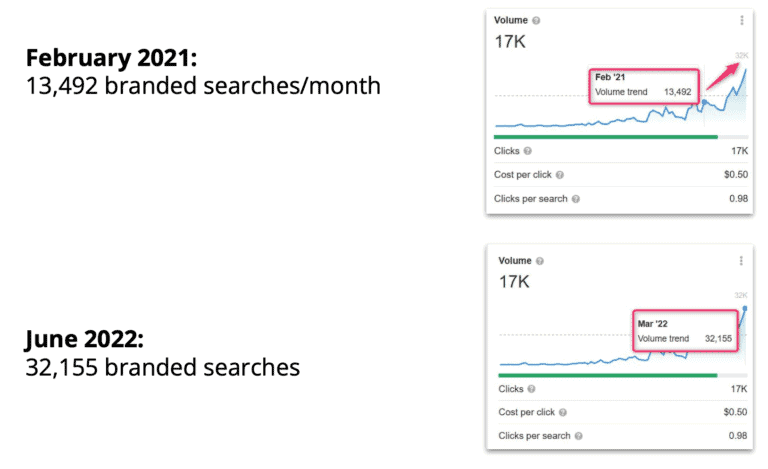
How it works:
- Pinpoint: Identify topics where data in the industry is lacking or outdated.
- Conduct research: Compile data, run surveys, or perform new experiments.
- Publish your findings: Write an easy-to-read report with clear visuals. Publish it.
- Earn citations: Other sites will link to your study as a valuable resource.
Example 5: Generate buzz and fast growth
Press release links come from distributing news to media outlets and digital news sites. These could be both mass media and niche-specific sites.
These types of links get you noticed by high-authority sites. News and authority sites typically have hundreds of thousands of subscribers and followers. If they share your content, this can drive a lot of new traffic to your domain.
This tactic is perfect for sharing big news, product launches, or exclusive studies.
This is part of what we did when working with EarlyBird. We combined press mentions and digital PR to drive thousands of signups and application downloads. This contributed to an 800% increase in organic traffic.
In just 16 months, EarlyBird even outranked Forbes by going from zero rankings to 70,000 monthly organic traffic. Today, they have over 20,000 active users.
(This is one of the press releases that linked to EarlyBird and generated tons of new visitors)
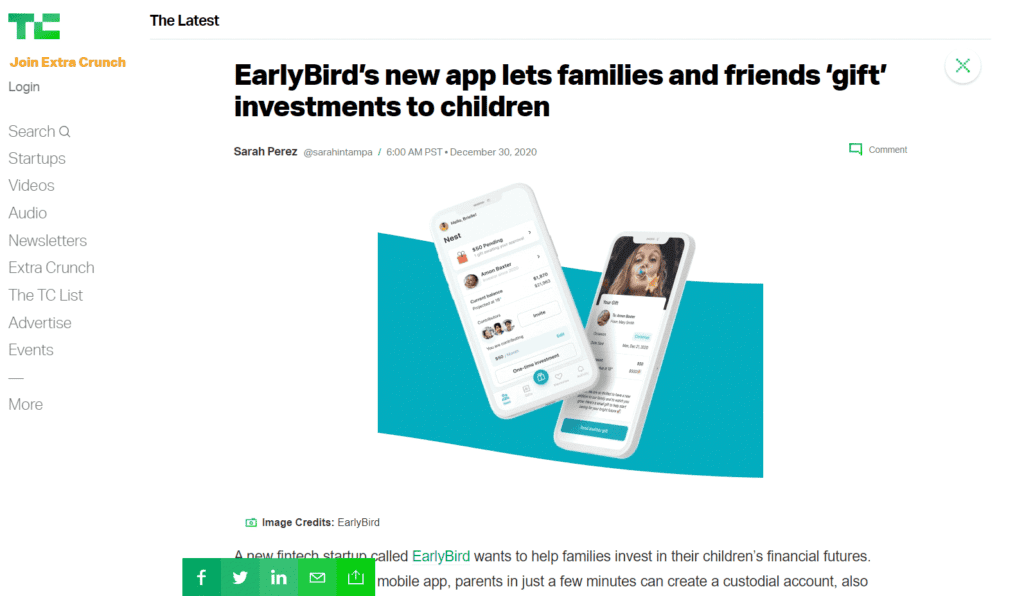
The potential for acquisition here is massive. Using press release links doesn’t just win on the SEO front. It means opening the floodgates to tons of new customers. Combine that with a strong funnel, and you could see incredibly fast growth.
How it works:
- Write a clear press release: Announce something newsworthy about your business.
- Distribute widely: Use press release services to reach trusted media. Target DR 50+ sites.
- Earn links: Top news sites and blogs pick up your release and link back to you.
- Share for exponential growth: Share the posts linking to you on your social media platforms.
Example 6: Build recurring authority
Podcasts and interview links are fun ways to share your story. When you go on interviews or join a podcast, you earn a backlink when your host includes your website. This method improves SEO and builds trust with a new audience.
This type of link is a triple-win scenario:
- The host gets new content for their audience.
- The host’s audience learns about you. Since they trust the host, they start trusting you as well.
- By getting interviewed, you increase your authority with your audience.
We used podcasts and interviews to drive more traffic to Growth Ramp. As a result, they gained new customers with an average lifetime value of $60,000.
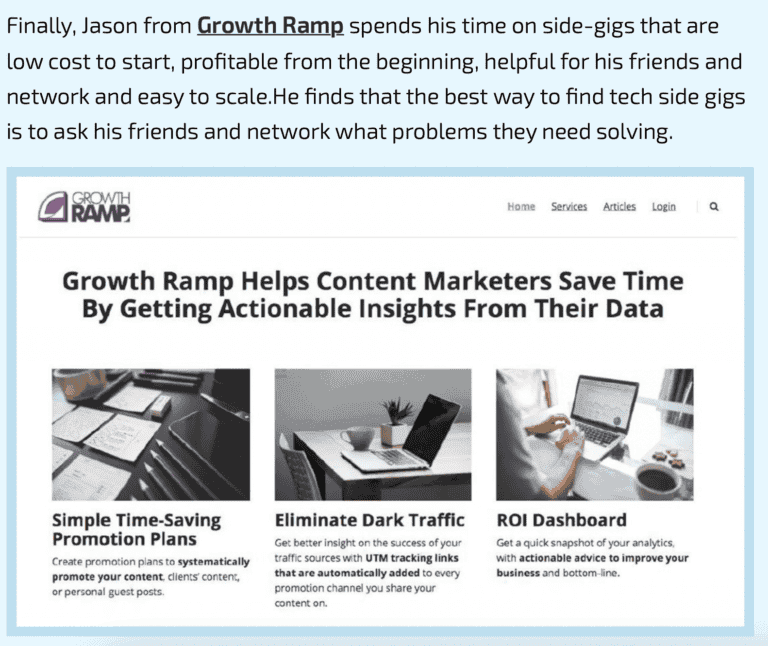
How it works:
- Share your expertise: Join podcasts or record interviews with industry influencers. Target those that are in the same industry or a similar niche. You can also leverage adjacent niches, especially if your product or service has benefits that could be useful to them.
- Earn natural links: The host will include your link in the show notes or article.
- Leverage new audience: Leverage new audience: Depending on their market awareness, create a flurry of content for your new audience. You can also include lead magnets, low-ticket products, or trials to bring these new people into your ecosystem.
- Boost credibility: Hearing your story from a trusted voice makes your brand more relatable. So, share the podcasts and interviews with your audience.
Example 7: Become the top choice
Another contextual link example is reviews. When high-authority sites review your product or tool, it is a strong recommendation. Product review links help potential customers learn about your offering from an unbiased source. These links build trust and can lead to more sales.
This is a great technique to use in some industries, like SaaS. The better your product is, the higher its chance of review sites choosing it for their articles and videos.
Review links are one of the strategies our team at uSERP uses to improve PandaDoc’s credibility. The contract management space can be extremely tough to compete in, as there’s a lot of competition.
So, we acquired backlinks from top review sites to PandaDoc’s landing pages. This increased traffic and keyword rankings by 50%.
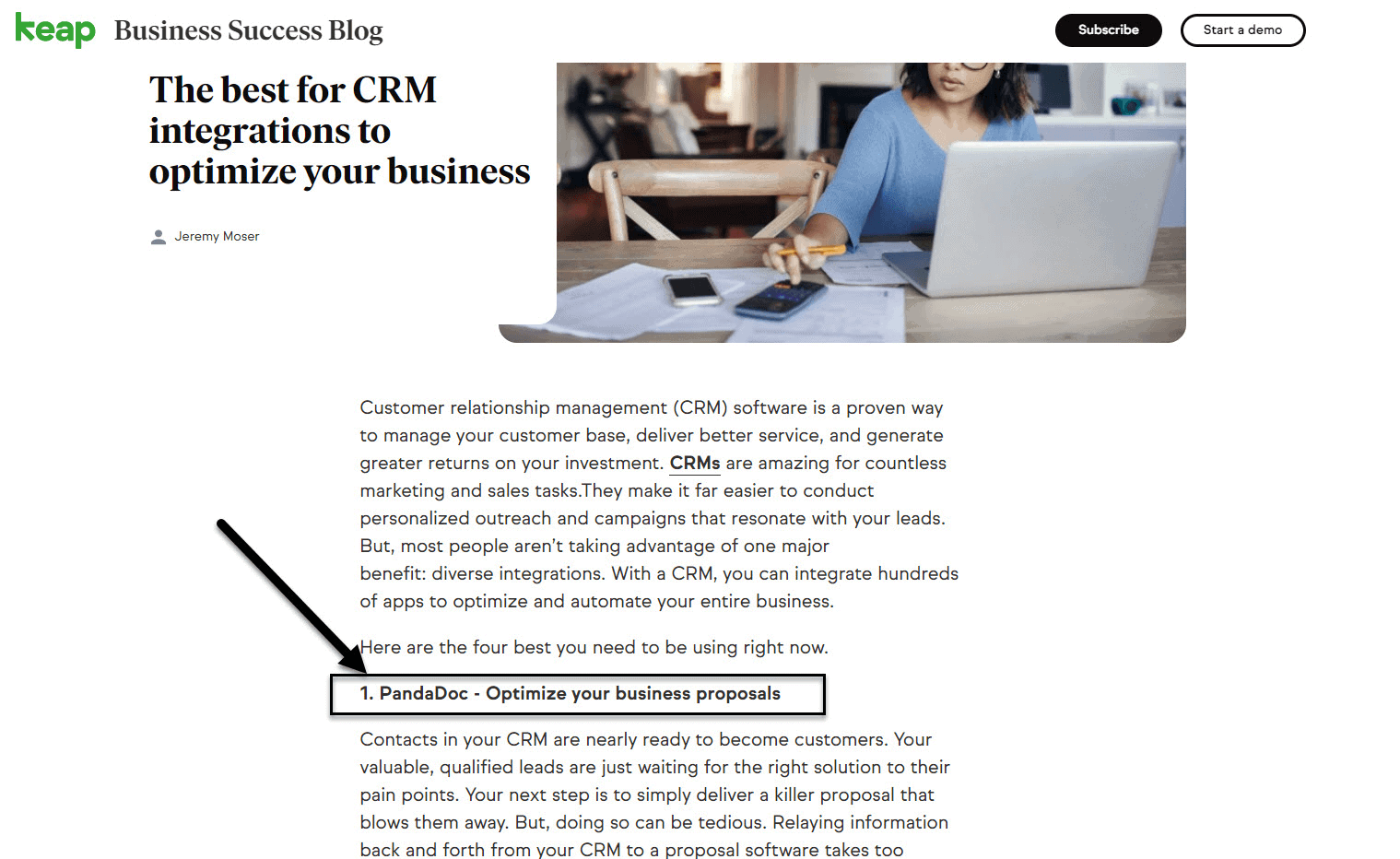
How it works:
- Get reviewed: Send your product to reviewers or ask for honest reviews on trusted blogs. Aim for those with a DR 50+.
- Earn natural links: The review site includes your link as part of their write-up.
- Boost your reputation: A positive review signals quality to new customers.
How to evaluate contextual link building quality
Not all agencies or link building strategies deliver the same results. Look into the following to know if you’re working with the right partner.
Relevance and natural integration
A study from Moz shows that pages with natural, contextually placed links get significantly more traffic than pages with generic links.
Quality links are part of helpful content. They should be natural, coming from pages that match your niche. You don’t have to exchange links with direct competitors, but you don’t get easy links from entirely different niches, either. These may push search results and your ranking off-track.
Quality over quantity
Backlinko’s research shows that top-ranking pages often have 3.8 times more high-quality backlinks than lower-ranking pages.
A few links from high-authority websites can be more beneficial than those from lower-quality sites. You can check that the linking site has a solid domain reputation from tools like Ahrefs.
At uSERP, we typically only link to sites with a DR 50+ score.
However, that doesn’t mean that lower scores mean a site is not worth linking to. New sites always start with low domain authority, so you can also check sites manually.
Avoid sites that post low-quality content, use spammy or unrelated anchor text, or have low traffic.
Proven results and transparency
Look for real case studies and detailed reports from your partner. Focus on what they achieved for their clients instead of how they grew.
For example, uSERP has several case studies showing significant traffic, rankings, and potential revenue jumps.
Such transparency helps you see the methods used and the measurable outcomes.
Customized strategies
The average industry approach often uses mass outreach and low-quality tactics, which is why many business owners receive countless emails asking for reciprocal linking. According to Moz, doing this on a mass scale can penalize your domain.

In contrast, uSERP focuses on personalized outreach and creating valuable, natural content. We don’t impose strategies because they work. We adapt to each client’s situation, niche, and goals.
This leads to better engagement, higher conversion rates, and scalable growth.
Long-term benefits
Good link building is not a quick fix. It builds authority over time. Agencies that focus on long-lasting, natural links help your site keep its ranking improvements.
It’s not a one-time gain, either. Any new visitors you receive can become email subscribers, social media followers, and customers. This warms them up and dramatically increases the likelihood of converting them into loyal fans and long-term repeat customers.
Why choose a partner like uSERP?
- Transparent results: uSERP’s case studies clearly show improved rankings and organic traffic.
- Tailored approach: We don’t use one-size-fits-all methods. Instead, we build a strategy that fits your business and industry.
- Expert support: With uSERP, you have access to SEO experts who know the ins and outs of quality link building. You also have direct contact with four partners: two seniors and two juniors.
If you’re tired of the average, low-quality link building methods and want to see real, lasting growth, consider booking a free consultation with one of our SEO experts. Let’s discuss how we can build a natural, high-quality link profile that drives traffic, boosts rankings, and grows your business.
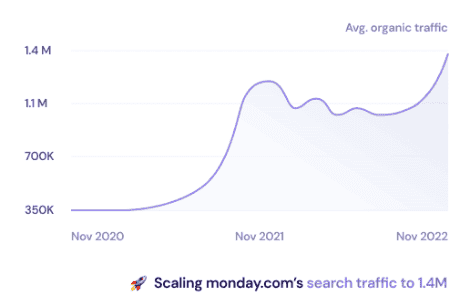
Frequently asked questions about contextual link building
Below are answers to 10 common questions about contextual backlinks.
1. What are contextual links?
Contextual links are hyperlinks embedded within the main body of an article. They appear in a natural flow of content, signaling trust and relevance to search engines. Unlike sidebar or footer links, they are integrated within valuable, detailed content that enhances user experience.
2. How do contextual links improve SEO?
These links act like strong votes of confidence from one site to another. When reputable websites include your link in a detailed article, search engines interpret it as a sign of authority. This helps improve your page’s ranking and increases organic traffic over time.
3. Why are case studies important in link building?
Case studies offer real-life examples of successful strategies. They show how tactics like guest posts, editorial outreach, and press releases can lead to measurable improvements in rankings, traffic, and domain authority. By studying these examples, you can replicate tactics that work.
4. What are some common types of contextual link building tactics?
There are many tactics, including:
- Guest post links: Writing valuable posts for other sites.
- Editorial links: Earning natural mentions from trusted sources.
- Press release links: Being listed on news sites.
- Internal links: This involves linking to other pages on your site.
- Podcast or interview links: Taking part in podcasts or interviews and getting backlinks to your site.
- Original research links – Publishing studies that earn natural citations.
- Product review links: Getting a high score on review sites.
5. How can I tell if a link is high-quality?
A high-quality link comes from a site with trust and relevance in your niche. Check that the link appears naturally in detailed content and if the hosting site has a strong domain rating. Tools like Ahrefs can help you verify this.
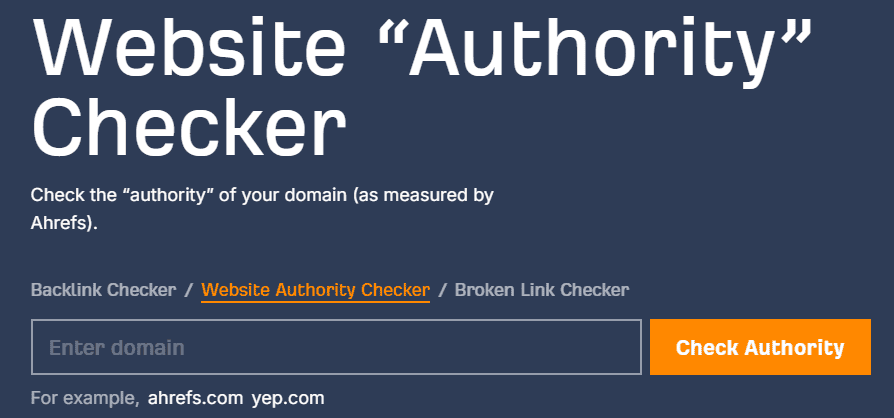
6. How long does it take to see results from contextual link building?
Results vary by industry and effort, but many businesses see improvements within a few months. Some case studies, like the Henry Meds campaign, show dramatic results in as little as three months with consistent, quality outreach.
7. Can I do contextual link building myself?
Yes, with enough research, outreach, and high-quality content, you can build contextual links on your own. However, many businesses find that working with experts like uSERP streamlines the process and helps them achieve better results faster.
8. What makes uSERP’s approach different?
uSERP focuses on relevance and transparency. We use proven tactics—guest posts, editorial outreach, resource pages, broken link replacements, infographics, original research, and influencer collaborations — tailored to your niche. Their case studies demonstrate measurable improvements in rankings and traffic.
9. Are there risks with contextual link building?
When done correctly, risks are minimal. The main challenge is ensuring that all links appear natural and in context. Avoid tactics that seem spammy or are purely for link building without adding value. Trusted partners like uSERP prioritize quality to avoid any negative impact.
10. Where can I learn more about effective link building?
Many recent studies and expert guides explain current SEO trends. Revisit the examples above and check credible sources like Statista for up-to-date insights. For personalized advice, consider booking a free consultation with us at uSERP’s team.
Final words
Contextual link building is not an option or a buzzword. It’s a proven SEO strategy for building authority, widening your reach, and gaining more daily customers.
Each tactic has its strength, and you can use any of the above examples to grow your online presence and rank higher in 2025.
And remember, if you need expert guidance, especially if you want to scale, we offer a free consultation. Schedule a call with us now.
